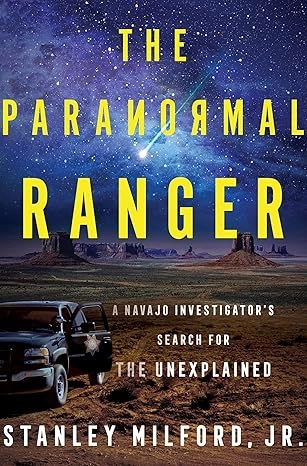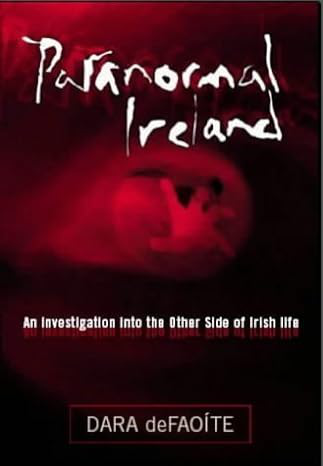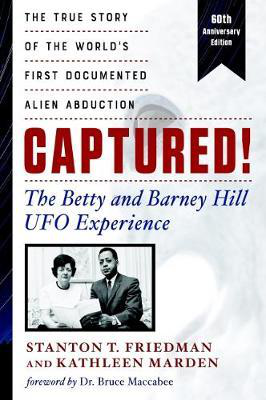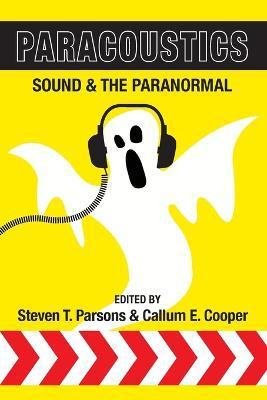Lies, Deceit - Who Is Luis Elizondo, Did AATIP Ever Exist As We're Led To Believe?
Alien Life & UFO/UAPs
Thursday 22nd, August 2024
4 minute read.
In an interesting piece by Todd Farley and Steven Greensreet from the New York Post from May 2022, they believe that we as a human race are further away from disclosure than ever, despite the tidal wave of news stories, official documents and videos of UFOs all over the internet.
What we've been told or led to believe could be a mix of crafted releases, a play on words and a sugar coating of timelines and individuals involvements in the varies departments within government.
But why, is there something to hide, is the water being muddied intentionally, why not tell the truth...
The ongoing story of UFOs and government investigations is more tangled than it initially seemed. What started with a bombshell New York Times article has evolved into a complex web of confusion, misinformation, and disputed narratives. Here’s a detailed breakdown of the Pentagon’s UFO investigation saga, featuring the Advanced Aerospace Threat Identification Program (AATIP) and the Advanced Aerospace Weapons Systems Application Program (AAWSAP).
2007-2012: At the behest of Senator Harry Reid, the Pentagon created a UFO research program known as the Advanced Aerospace Threat Identification Program (AATIP). Initially funded with €19.7 ($22) million, the program was managed by Bigelow Aerospace Advanced Space Studies (BAASS), founded by millionaire Robert Bigelow, a longtime UFO enthusiast.
The program was reportedly directed by Luis Elizondo, a former Pentagon counterintelligence official, and involved controversial figures like Hal Puthoff, known for his involvement in Project Stargate and claims of psychic abilities.
In December 2017, The New York Times, along with Politico, published front-page stories revealing the existence of AATIP, including videos of UFOs filmed by the US Navy. This coverage was a turning point, bringing the UFO topic into the mainstream media spotlight and sparking widespread public and congressional interest.
Discrepancies began to emerge regarding the program’s name and timeline. The New York Times reported the program began in 2007, while Politico suggested 2009. Issues with the accuracy of the program’s name, which varied between “Advanced Aerospace Threat Identification Program” and “Advanced Aviation Threat Identification Program”, also arose.
Next we have Elizondo claiming to be the director of AATIP. However, Pentagon statements and documents have consistently denied his official involvement. The confusion deepened when it was revealed that Elizondo's role, if any, might have been more informal or unofficial.
The Pentagon’s program, known officially as the Advanced Aerospace Weapons Systems Application Program (AAWSAP), was AATIP, AATIP was a nickname for AAWSAP to try and get AAWSAP protection as a SAP. Funded by the same €19.7 ($22) million, AAWSAP's primary focus was stated on paper was aerospace technologies and foreign threats, rather than UFOs or paranormal phenomena.
AAWSAP, under the direction of James Lacatski, was tasked with studying a broad range of topics, including paranormal phenomena at Skinwalker Ranch. The program was criticized for its focus on unorthodox subjects like ghosts and werewolves.
AAWSAP was shut down in 2012 due to perceived lack of progress. Elizondo’s subsequent claims about continuing AATIP's work appear to have been more about maintaining interest in UFO research rather than managing an official program.
James Lacatski and Colm Keller, in their book Skinwalkers at the Pentagon, have criticized the original reporting, stating that the New York Times article only covered a fraction of AAWSAP’s actual activities and failed to clarify the program’s true nature.
Leslie Cain and Ralph Blumenthal played key roles in the New York Times articles. Cain’s focus was on establishing the credibility of UFO research, potentially at the expense of a full and nuanced portrayal of the programs involved. Blumenthal, a seasoned journalist, contributed to the story’s high-profile exposure but also faced criticism for not addressing all aspects of the AAWSAP program.
Despite the initial excitement, much of the detailed, accurate information about the Pentagon’s UFO investigations remains under reported or misunderstood. The real nature of these programs continues to be debated, with many questions left unanswered.
The UFO topic remains a point of interest for both the public and Congress, with ongoing discussions about the implications of the initial reports and the need for clearer, more accurate information.
The story of the Pentagon’s UFO programs is a classic example of how complex and multifaceted issues can become muddled through conflicting reports, miscommunications, and evolving narratives. While the fascination with UFOs persists, it’s crucial to sift through the layers of misinformation and focus on verified, clear information to understand the true scope and impact of these investigations.
Unfortunately we are non the wiser, and the reality is that so many people have an idea of what the final outcome will be that the will believe anything that fits their narrative, brushing aside the many gaping wholes and twisted information that is plaining presented and backed up with official documents.
What we've been told or led to believe could be a mix of crafted releases, a play on words and a sugar coating of timelines and individuals involvements in the varies departments within government.
But why, is there something to hide, is the water being muddied intentionally, why not tell the truth...
The ongoing story of UFOs and government investigations is more tangled than it initially seemed. What started with a bombshell New York Times article has evolved into a complex web of confusion, misinformation, and disputed narratives. Here’s a detailed breakdown of the Pentagon’s UFO investigation saga, featuring the Advanced Aerospace Threat Identification Program (AATIP) and the Advanced Aerospace Weapons Systems Application Program (AAWSAP).
2007-2012: At the behest of Senator Harry Reid, the Pentagon created a UFO research program known as the Advanced Aerospace Threat Identification Program (AATIP). Initially funded with €19.7 ($22) million, the program was managed by Bigelow Aerospace Advanced Space Studies (BAASS), founded by millionaire Robert Bigelow, a longtime UFO enthusiast.
The program was reportedly directed by Luis Elizondo, a former Pentagon counterintelligence official, and involved controversial figures like Hal Puthoff, known for his involvement in Project Stargate and claims of psychic abilities.
In December 2017, The New York Times, along with Politico, published front-page stories revealing the existence of AATIP, including videos of UFOs filmed by the US Navy. This coverage was a turning point, bringing the UFO topic into the mainstream media spotlight and sparking widespread public and congressional interest.
Discrepancies began to emerge regarding the program’s name and timeline. The New York Times reported the program began in 2007, while Politico suggested 2009. Issues with the accuracy of the program’s name, which varied between “Advanced Aerospace Threat Identification Program” and “Advanced Aviation Threat Identification Program”, also arose.
Next we have Elizondo claiming to be the director of AATIP. However, Pentagon statements and documents have consistently denied his official involvement. The confusion deepened when it was revealed that Elizondo's role, if any, might have been more informal or unofficial.
The Pentagon’s program, known officially as the Advanced Aerospace Weapons Systems Application Program (AAWSAP), was AATIP, AATIP was a nickname for AAWSAP to try and get AAWSAP protection as a SAP. Funded by the same €19.7 ($22) million, AAWSAP's primary focus was stated on paper was aerospace technologies and foreign threats, rather than UFOs or paranormal phenomena.
AAWSAP, under the direction of James Lacatski, was tasked with studying a broad range of topics, including paranormal phenomena at Skinwalker Ranch. The program was criticized for its focus on unorthodox subjects like ghosts and werewolves.
AAWSAP was shut down in 2012 due to perceived lack of progress. Elizondo’s subsequent claims about continuing AATIP's work appear to have been more about maintaining interest in UFO research rather than managing an official program.
James Lacatski and Colm Keller, in their book Skinwalkers at the Pentagon, have criticized the original reporting, stating that the New York Times article only covered a fraction of AAWSAP’s actual activities and failed to clarify the program’s true nature.
Leslie Cain and Ralph Blumenthal played key roles in the New York Times articles. Cain’s focus was on establishing the credibility of UFO research, potentially at the expense of a full and nuanced portrayal of the programs involved. Blumenthal, a seasoned journalist, contributed to the story’s high-profile exposure but also faced criticism for not addressing all aspects of the AAWSAP program.
Despite the initial excitement, much of the detailed, accurate information about the Pentagon’s UFO investigations remains under reported or misunderstood. The real nature of these programs continues to be debated, with many questions left unanswered.
The UFO topic remains a point of interest for both the public and Congress, with ongoing discussions about the implications of the initial reports and the need for clearer, more accurate information.
The story of the Pentagon’s UFO programs is a classic example of how complex and multifaceted issues can become muddled through conflicting reports, miscommunications, and evolving narratives. While the fascination with UFOs persists, it’s crucial to sift through the layers of misinformation and focus on verified, clear information to understand the true scope and impact of these investigations.
Unfortunately we are non the wiser, and the reality is that so many people have an idea of what the final outcome will be that the will believe anything that fits their narrative, brushing aside the many gaping wholes and twisted information that is plaining presented and backed up with official documents.



